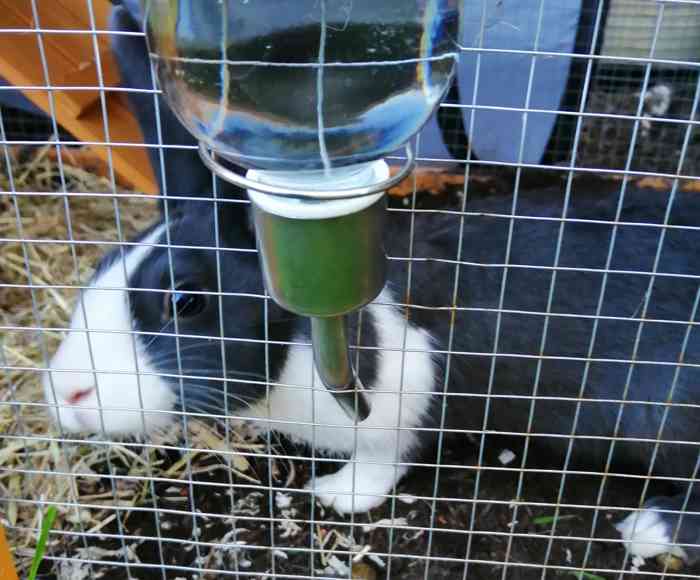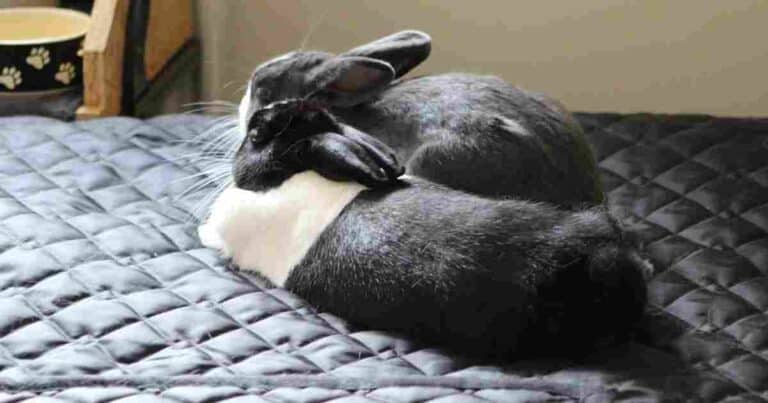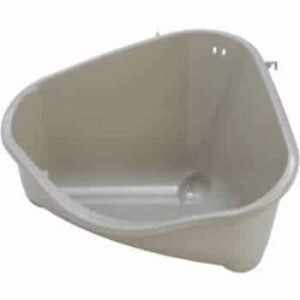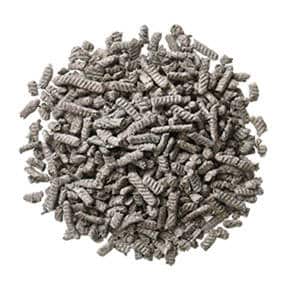Introduction
Is it OK to keep rabbits indoors? Yes, rabbits live indoors, and being safe from predators are often more relaxed in that environment. However, if you are considering keeping rabbits indoors, there are a few things you should know. But, if you invest the time and effort when owning a rabbit, you will gain an affectionate, fun-loving friend. In this post, we will explore how to make your home safe for keeping rabbits indoors. The problems you may experience, how to manage them, and living in harmony with house rabbits.
Table of Contents
Keeping Rabbits Indoors
Whichever way you keep rabbits, indoors or outdoors, they need proper care and attention. So, you should first decide if you genuinely want a pet rabbit or just a rabbit in the garden. Because a pet dog, cat, or rabbit needs to feel included in a family to reap the rewards they offer. Keeping rabbits indoors makes their management easier by including most of the daily tasks in your housework. Keeping rabbits indoors, however, may give your vacuum cleaner a little more work to do.
Because rabbits change their coat completely four times a year, but unlike dog hair doesn’t stick to carpets. Do rabbits smell if kept indoors? Not if you manage them properly! Rabbits urine has an extraordinarily potent smell, but using the correct base layer in the litter tray will deodorise it. Whereas their poo won’t smell if you are feeding rabbits as nature intended! I live with two rabbits that free roam my entire home.
Visitors to my home have expressed their surprise that, in their words, ‘your house doesn’t smell like a rabbit hutch’. How long can a rabbit live indoors? It’s whole life. The average life span of a well-cared for pet rabbit is ten years. However, rabbits appreciate some actively managed free roaming in an enclosed garden if one is available. The ability to behave naturally and forage in a garden will help balance and add variety to its diet.
It’s ok to substitute grass on the root with hay, but to rabbits, there’s nothing like the real thing. But if you have exclusive access to your garden, you could after rabbit proofing, and predator proofing. Give your of rabbits a free roaming lifestyle.
keeping rabbits indoors confined
Are you planning to confine your hairy hopping house guest? If so, to house rabbits indoors needs 6 square metres of free space, in which to create a suitable habitat. However, keeping rabbits indoors in a cage, hutch or area less than 6 square metres. Is, and never should, be an option. It is essential for a rabbit’s welfare to have sufficient space to exercise and play! Without it, rabbits suffer both physically and mentally.

This space should be free from electric cables, ventilated in hot weather, and not be near a heat source. However, if space is a problem, then consider letting your rabbits free roam unconfined using one or more rooms. Rabbits free roaming in your home, or part of it, like cats and dogs, become part of the family. Resulting in happier, healthier and more affectionate pets that love human company. However, a single rabbit will need another for company if left alone for lengthy periods.
Keeping Rabbits indoors free to roam
But keeping free roaming rabbits indoors creates some problems, so you will need to prepare. Because like a new puppy they will chew anything, wooden furniture, soft furnishings, electric cables, and house plants.
wooden furniture
Do wild rabbits chew? Yes, chewing wood comes naturally. Wild rabbits will chew twigs, roots, and bark to help wear their teeth down. So, in your house, wood is the pet rabbit’s ideal substitute, the prime targets being chairs and table legs.
soft furnishings
But the bigger problem with keeping rabbits indoors is soft furnishings. Because all fabrics are at risk, so, if they can reach it, they will chew it. Rabbits explore their surroundings using smell, touch, and taste. So, if it feels, smells, and tastes good, they eat it. Which is not just annoying for you, it’s not good for the rabbit! As most household fabrics are, or contain synthetic fibres that can cause an intestinal blockage and kill the rabbit.
electric cables
There are many theories why rabbits chew electric cables. But the most plausible is that they resemble twigs or roots. So, all high and low-voltage cables must be inaccessible to your house rabbit! Run wires out of the rabbit’s reach, behind furniture, or in plastic trunking to protect them. Unprotected cables are not just a hazard to the rabbit! Damaged wires could also be fatal for you!
house plants
When keeping rabbits indoors, play safe and consider all your house plants toxic, and the majority will be. So, make sure your house plants are well out of their reach or remove them altogether. Rabbits are past masters at getting to things we think are safe! For example, I had a plastic ornamental Bonsai tree on my sideboard I thought was safe, and it was. Until I moved a dining chair to clean under the table and forgot to put it back, before going out. Hence, on my return, the tree’s foliage was all over the floor, along with the trunk in its pot.
keeping rabbits indoors - deterring chewing
Keeping rabbits indoors may make them appear to be agents of destruction. But these annoying traits are easy to control. Using a chew-stopping training spray where they chew while providing them with some alternatives will help.
For example, apple, hazel, or rosewood sticks for them to gnaw. With non-toxic cardboard, hay tunnels, and woven grass mats for them to destroy. The more toys your rabbit can play with, the better, a bored rabbit is more inclined to chew. Plus, adding some training as it matures can help you stop the damage the rabbit does to your home altogether.
training indoor rabbits
Keeping rabbits indoors may require some training. But teaching rabbits not to chew takes time and patience. The first step is to bond with your long-eared hopping house guest. Once bonded, choose a control word that should be short, “No”, for instance. “Don’t chew that bunny-kins” will only go in one long ear and out the other. Rabbits have a short attention span, so when you find them chewing. Gently move their head away using one finger while firmly saying, “No”, and offering an alternative (i.e., a stick).
But do not shout or offer them anything they could consider a reward for chewing. Repeat the exercise if your bunny takes the offered alternative and throws it away to return to chewing. This playtime will only last a minute or two before your bunny moves away. However, don’t lose your temper! Remember you are training, so do not terrorise your bunny. Eventually, your rabbit should respond to, “No”, but do not expect a quick fix. Or, as rabbits appear to have selective hearing, “No”, working every time.
Litter Training
Keeping rabbits indoors will require litter training. But you will need a high-backed litter tray and small animal litter. Plus, white vinegar in a spray bottle and a roll of kitchen towel to start.
Rabbits prefer to pick where they relieve themselves, usually a corner close to their food and water. So let it because you need it to pee! Soak up as much as you can, using a sheet of kitchen towel. Then spray the spot with white vinegar, and leave for a few minutes to remove the rabbit’s scent before cleaning. Take the pee-soaked towel, and keeping it flat. Rub it around the inside of the litter tray, before laying it flat in the bottom.
Now add a thin layer of small animal litter covering the bottom of the tray, and pee-soaked towel. Next, because rabbits like to eat while relieving themselves, add a layer of hay covering the small animal litter. Once you have finished cleaning, place the litter tray with its food and water, where your rabbit peed. When your rabbit returns for a pee, it will smell the litter tray and should start using it.
However, if it relieves itself outside the litter tray, repeat steps one and two. But only rub the kitchen towel over the exposed inside of the tray. Once your rabbit’s using the tray. It will need cleaning daily, and you can gradually move it to a place of your choosing. Along with the food and water. However, I recommend putting a waterproof layer under the litter tray if it’s on your carpet!
conclusion
Keeping rabbits indoors may seem problematic, and it can be at first, but I found most problems easy to solve. But keeping rabbits outside, for me, had far more, and they would not be part of a family. My rabbits were young, and quickly adapted to life in my home, becoming the pets and companions I wanted. However, learning the house rules took a little longer for one of them. So, for me, the pros of keeping rabbits indoors, far out way the cons I have outlined above.
My rabbits are easier to keep warm and dry in the winter, and cool in hot weather. Keeping rabbits indoors gives them protection from predators, while costing far less than a safe environment outside. Which also involves going out in all weathers to feed them, clean their environment, and regularly check their wellbeing. Letting my rabbits live indoors is less time consuming, by combining their feeding, cleaning, and comfort with my own.



